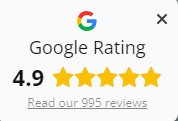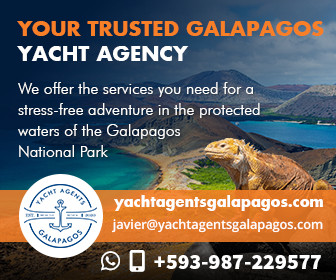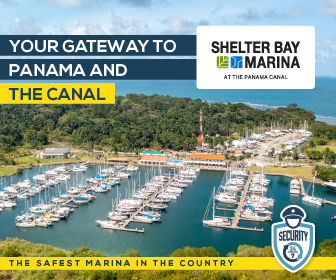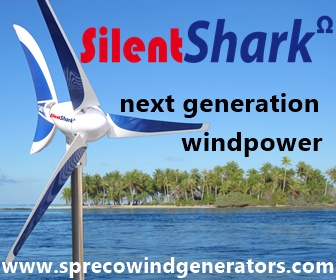Portrait of a Cruiser: Dawn and Stephen Bell – Slow Circumnavigators
Full time liveaboard cruisers Stephen and Dawn Bell have sailed all of the US eastern coast and much of the Caribbean. While their long-term plan is a circumnavigation, they realise it is a major commitment and that plans can change for a variety of different reasons. Consequently they are taking it nice and slow, as they relate in their cruiser portrait for Noonsite.
Published 1 month ago
Names of Owners: Dawn and Stephen Bell
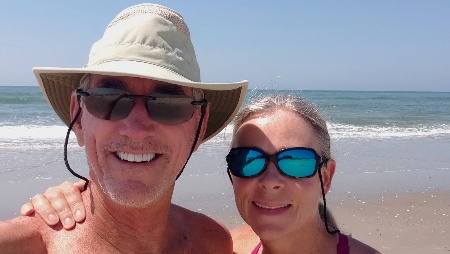

Nationality: USA
Boat Name: PILAR
Boat Type/Model and Size: Catamaran, Leopard 48, SAIL
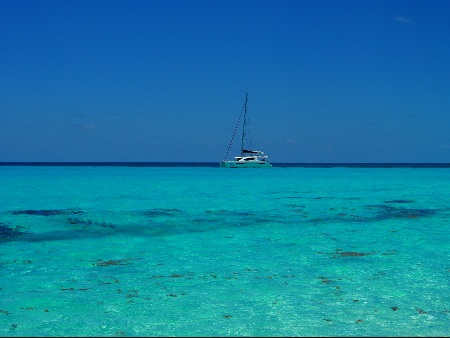

Your Home Port: Charleston, South Carolina
Blog and Social Media:
How did you start cruising?
Stephen started sailing in his twenties and delivered boats for several years, along the east coast, Caribbean and even through the Panama Canal. He also had a charter fishing business in those early years and has maintained his USCG Merchant Mariner license since 1985. Then family and work life took over until retirement. Dawn began boating when she and Stephen met and sailed her first trip from Green Turtle Bahamas to Charleston, South Carolina.
We both enjoyed extensive scuba diving in the early years of our marriage, then decided we needed a new challenge. With a long-term plan to cruise we purchased our Leopard 48 while still working so we could get accustomed to the boat and make upgrades we wanted for our cruising lifestyle.
Now we’re cruising full time traveling the east coast of the USA from Florida to Maine, sailing to the Caribbean in the Leeward and Windward islands and next we are on our way to Panama and a Pacific crossing. How did we begin? – more details on our blog.
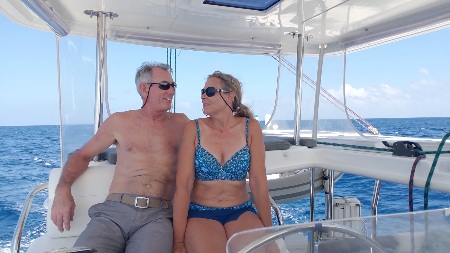

Describe what sort of cruisers you are:
We are full time cruisers living aboard our Leopard 48 sailing catamaran. We tend to move often between anchorages, to see all the wonderful places we can. We’re very self-sufficient on PILAR with lithium batteries, solar energy and water maker. We can provision for months at a time and live on the anchor comfortably. But it is nice to go ashore to see the sites and have an occasional dinner out. We tend to enjoy the more secluded anchorages where it is often just us, or a handful of other boats. We love to meet fellow cruisers along the way and enjoy time together in anchorages, on hikes and land excursions.
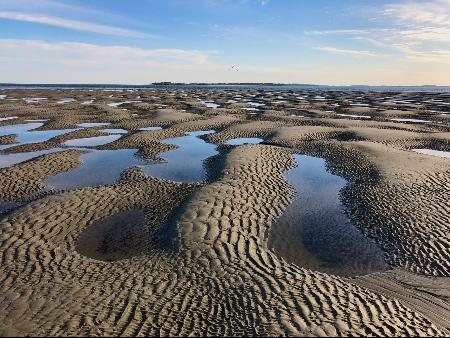

What type of cruising are you doing currently?
Our long-term plan is a circumnavigation, but we always keep in mind that is a major commitment and plans can change for a variety of different reasons. So, we take each part of the circumnavigation journey as they come and do our best to enjoy the moment of each passage and season. While we move often, we’re in no hurry to circle the globe. We’ll take each leg of the trip according to seasonal timing and enjoy the areas we cruise as much as weather allows. We’re in the beginning stages of the long-term plan and have sailed all of the US eastern coast and much of the Caribbean. We will haul the boat for hurricane season and take care of some repairs and some needs back in the States while we wait for the Panama Canal transit and Pacific crossing timing. Come fall we’ll head to San Blas before transiting the canal.
What were the key reasons you selected your current boat?
The Leopard 48 checked a lot of boxes for us. It’s big enough to handle the ocean well on passages we intend to make. It’s easily manageable by two people for all points of sail. It is an owner’s version which was important for live-aboard lifestyle. And it’s affordable for the budget we’re sailing under. There’s a good support group for the Leopards on social media including specific groups for the L48.
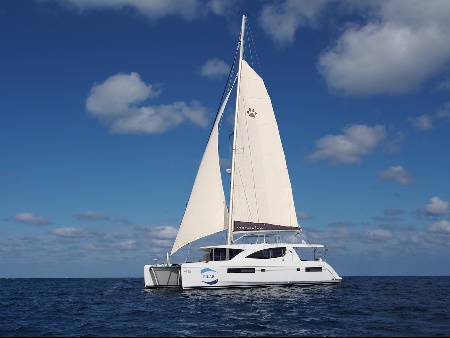

What other boats have you owned?
In Stephen’s past most of his sailing was yacht deliveries and charters, so he’s sailed several monohulls and catamarans. Other boats owned in the past were sport fishing boats while operating a sport fishing charter operation and pleasure power craft. All past boating history has been ocean – saltwater only.
What changes have you made to your current boat?
We added features to the boat for more comfort, safety, and long passages. One big feature was modifying the master bunk to King size vs. the Queen with tapered foot. Other cruisers are envious of this feature. We also went electric for stove top and oven and eliminated gas in the cabin, but we still have gas for the outdoor grill. We added substantial solar power and 1200ah of ReLion LifePO4 batteries and found we can power most of our needs without the generator or engine charges. Dawn still operates her business from the boat so we added Starlink for internet access. You can see a lot of these upgrades on our website and youtube channel.
Most useful equipment fitted and reasons for this choice:
Without hesitation the solar power and LifePO4 battery bank have been the best additions to the boat. These features allow us to be totally off the grid from a power perspective. We can anchor indefinitely with plenty of power for boat operations, cooking, water making and internet access for business and pleasure.
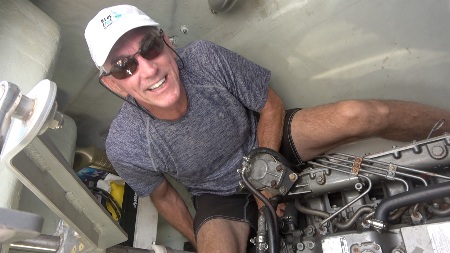

Equipment regrets, or things you would do differently:
We had hoped we could add more built-in refrigeration and freezer space since we think the Leopard is limited for long term off the grid cruising. We never found a feasible place to add additional capacity. We have seen others do so in the L48, however one must give up something to gain that space. For example, some took out the nav station settee, others modified electrical panel access to add full size refrigeration. We just felt it wasn’t worth giving up these spaces or the money to make these major modifications. We compromised with a portable 12-volt freezer in the cockpit and it has served us well and not interfered with living space. And we can’t forget the King size master bunk. We tend to take it for granted now. Many nights we can’t wait for bedtime!
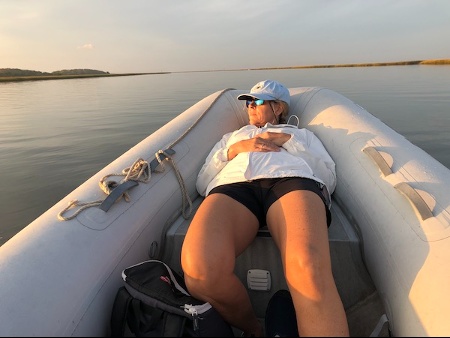

List the countries you have cruised:
While we modified the boat, we stayed on the southeastern US coast and explored virtually every inlet from North Carolina to the west coast of Florida. Before sailing to the Caribbean, we explored the NE US coast from Chesapeake to Maine. Since then, we have been sailing the Caribbean in the Leeward and Windward islands. We visited every island from Antigua to Grenada and back north to the BVIs. There’s a lot of clearing in and clearing out of all these small Caribbean countries, so our passports are getting full!
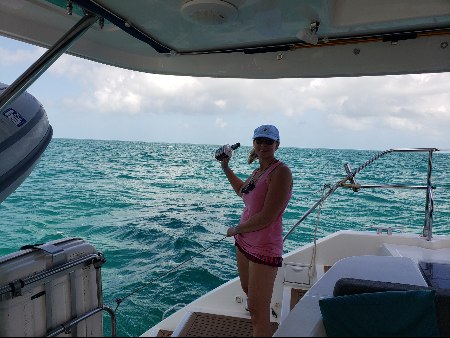

Future cruising plans:
Plans tend to change with life and ours has. We had planned to sail from Grenada to the ABC’s and Panama, but made some adjustments and ended up in BVI. Still, we plan to be in Panama for the fall of 2024 with a canal transit in 2025 and then across the Pacific. In the meantime, we will find a place to sit out Hurricane season.
How do you select a location for hurricane season?
We choose the zone based on hurricane path avoidance, north or south of common hurricane zone weather patterns. There are statistics available for hurricanes so that helps us narrow down quickly. We use the NOAA tool online.
We determine what our future cruising route will be and then list possible locations for the boat. Some key deciding factors are as follows:
- Do we need to haul-out or can we stay in the water? We use this opportunity for boat work so we choose a location that can haul, store and work on our boat. A limited attribute for many yards is the ability to haul a catamaran with 25’ beam. The decision to haul out quickly sorts the list of available hurricane storage locations.
- We look at our cruising route and the possible locations for storage that will also be secure, easy to get supplies, good to work with and a country that welcomes long-term storage. For example, our cruise route will be from the Caribbean to Panama where we will transit the canal in 2025. So, we looked at locations in the ABC Islands, Columbia, Guatemala, and Panama.
- We access the ease of travel to and from the US for each of the locations to be sure it is reasonable for us to travel to the yard for work follow-up and personal boat maintenance while it is in the yard.
- We reach out to the cruising community for recommendations from those who have used some of the boat yards and Marinas in these locations. We received great feedback from cruisers who had used these yards for hurricane storage and haul-out work. We used the network of cruising communities and groups in social media and various groups like Salty Dawgs, SSCA and Ocean Cruising Club. OCC had a major advantage in their list of Port Officers whom we reached out to for each of the locations we considered. Their input was invaluable for the capabilities of each of the boat yards we considered.
- Finally, we reach out to the yards and talk to the management and the project leads. We discussed our length of storage time, security and share with them a list of work we want done while it is in their yard. From there we can make the best decision for travel, safety, security and boat work for our long-term hurricane boat storage.
List the oceans/seas you have crossed:
We sailed to Grand Cayman (around Cuba) on our first long voyage on PILAR in 2019. We made the passage from the Chesapeake to the Caribbean in 2023. In the past Stephen has sailed the Caribbean Sea through Panama and up the west coast to southern California.
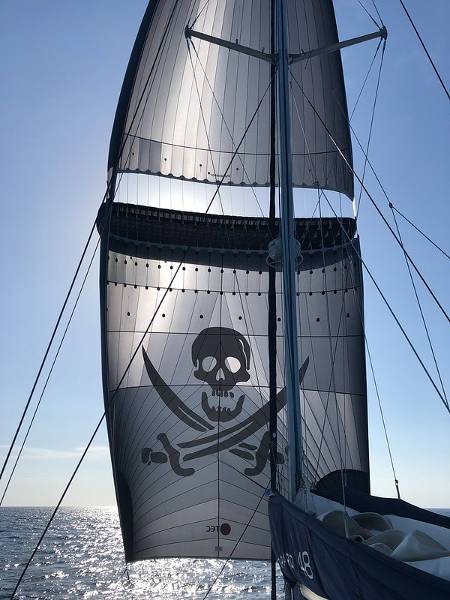

Approximate sea miles:
- Stephen – 18,000
- Dawn – 6,000
Scariest day on the water:
We sailed from the east coast out to the Gulf Stream for some sailing and fishing given Stephen’s love for catching blue water fish. An overnight sail to the stream caught us in summer storm conditions with 40 knot winds, heavy rain, lightening and big seas. Of course, it started at night, so we were hit fast and had to make sail and direction decisions in the dark. While we can handle these conditions with proper planning, we weren’t prepared for our furling line to break thus unfurling the reefed genoa in the heat of the heavy winds and sea. Getting that under control and at night was challenging.
In the end we went on the foredeck and collected what was left of the furling line and we were able to mend the line, get it on a winch and furl in the genoa. Once we had control, we opted to sail back to the coast in heavy rain the entire leg back. We couldn’t make our original port so sailed our best angle and landed miles above where we left from. Stephen has not requested any overnight sailing/fishing trips since this one!
Best cruising moment:
We love the southeastern coast of the US. So many cruisers jump straight to the islands since frankly that’s what our boats are made for. During COVID and some winters we sailed in and out of the inlets of the southeastern US and in most cases, there was no one there. We anchored in pristine marshlands wherever we liked and found many were state parks, national parks, or just uninhabited islands free for adventuring. The marine and bird life in these locations is astounding and the marshland anchorages spectacular. And while one might think this is easy sailing it does have its challenges of weather, currents, and shallow inlets.
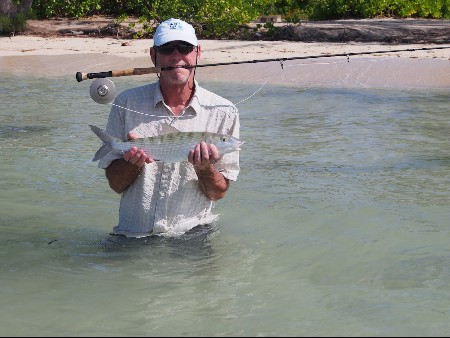

Favorite cruising area and why:
While we have sailed virtually all of the east coast of the US, we liked the Caribbean the most for cruising. The Grenadines were especially beautiful for us and allowed many anchorages for either solitude or fellow cruiser companionship. The Caribbean is easy cruising with the wind steady and from a similar direction virtually every day. Planning your day sails and anchorages is easy and there are plenty of options. The weather in the winter is great and the island adventures natural and beautiful. One thing we note is to be sure you are well provisioned before you sail the Grenadines. Choices are very limited in these islands.
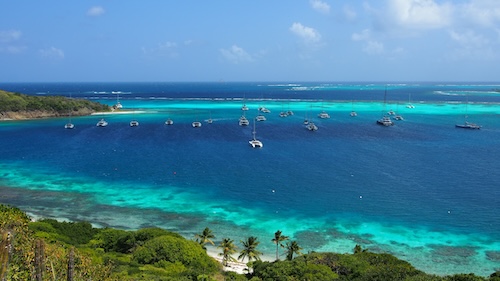

Favorite anchorage:
- Eastern Caribbean – Sandy Island, Carriacou
- South East Coast US – Botany, Edisto Island SC
- North East Coast US – Gloucester!
- Cuba – Caya Largo
Favorite cruising apps:
For weather, PredictWind and Windy (daily use). For cruising information WhatsAPP groups. Some groups like Salty Dawgs, Ocean Cruising Club and more have “member maps” that let us locate fellow cruisers and meet new people.
Favorite cruising websites:
Noonsite, Lonely Planet, Facebook/Instagram/Youtube cruisers pages are always interesting and a good way to know what other people enjoy so you can visit that area as well. We love it when people reach out to us on our social pages!
What advice or message would you want to pass on to anyone new to cruising or thinking about casting off the dock lines?
Be mindful of your expectations. Social media these days shows unimaginable lifestyles that anyone can have for adventure, family togetherness, an easy life and at a low budget. Many who see this information are ready to jump on board and sail around the world as soon as they can afford a boat.
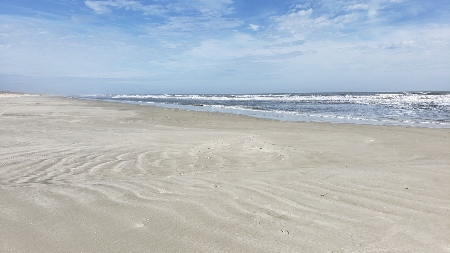

However, many find it’s not for them after the first season or two. Start slow. Set obtainable goals. Sail the east coast. Sail the Bahamas or sail the Caribbean to be sure this is a life you can live and afford. Those who say you can sail on a low budget are not enjoying the YouTube life we all see on social media and a thousand square feet or less with no escape is a tight space to live in with your family or closest companion.
What is it that inspires you to keep cruising?
Adventure. Seeing new places and traveling the globe. The sense of accomplishment you get from sailing journeys. This is not an easy life. Sailing can be challenging with weather, heavy seas, and constant breakdowns of equipment. And you must learn to live with your companion amongst all of these challenges. But you get better at it every day. You become a better sailor. You become a better team. You break things less and you learn how to maintain and repair your boat better. Once you sail in some salty conditions and your boat is trimmed for the conditions with most of your equipment operational there’s a euphoria of meeting the challenge and becoming one with your sailing lifestyle.
Dawn and Stephen Bell
SV Pilar
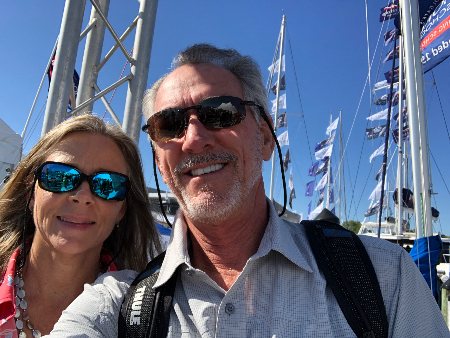

……………………………………
Related Content:
More Portrait of a Cruiser stories
If you think you have an interesting story to tell and would like to take part in our Portrait of a Cruiser series, please contact Sue at [email protected] for a questionnaire.
……………………………………..
The opinions expressed in this article are the author’s own and do not reflect the view of Noonsite.com or World Cruising Club.
……………………………………
Find out all news, reports, links and comments posted on Noonsite, plus cruising information from around the world, by subscribing to our FREE monthly newsletter. Go to https://www.noonsite.com/newsletter/.
Related to following destinations: Canouan, Cuba, East Coast (USA), Grenada, Marina Cayo Largo, Mayreau, St. Vincent & the Grenadines, The Grenadines, Tobago Cays, Tyrell Bay & Hillsborough (Carriacou), Union Island
Related to the following Cruising Resources: Circumnavigation, Portrait of a Cruiser

